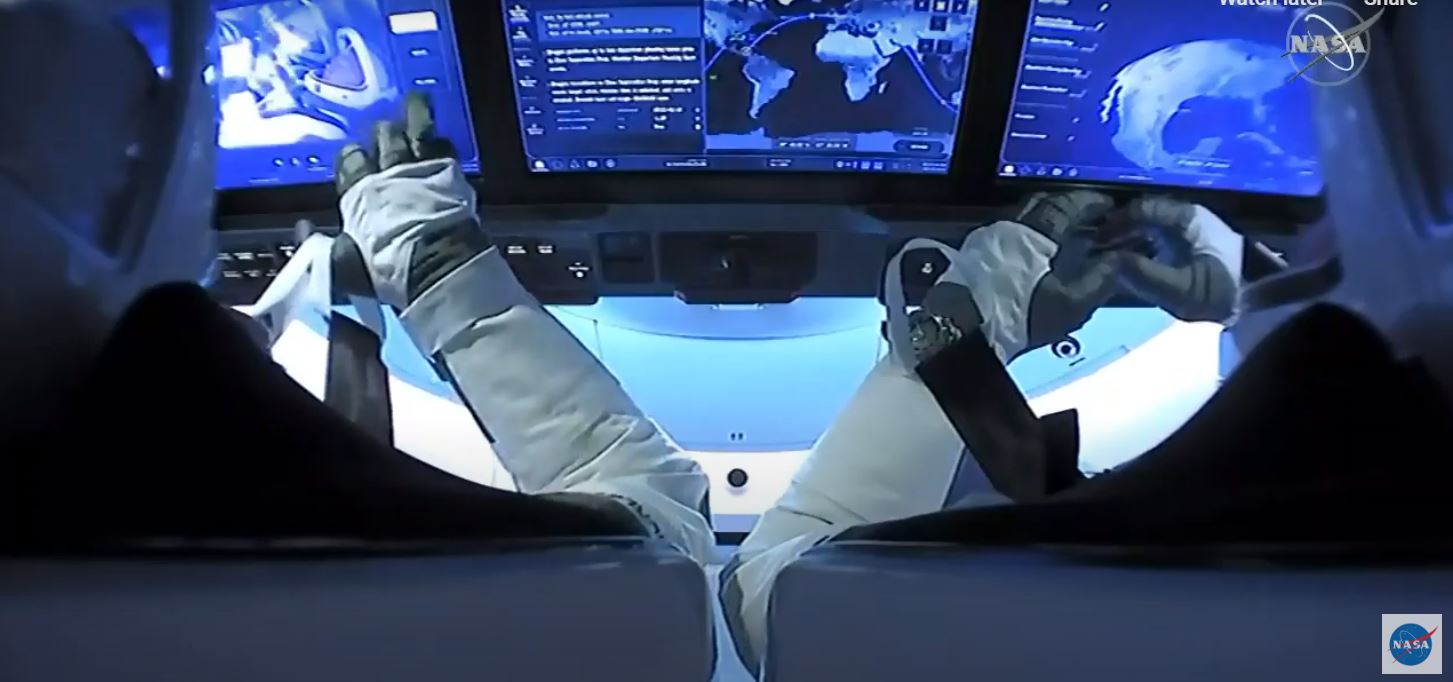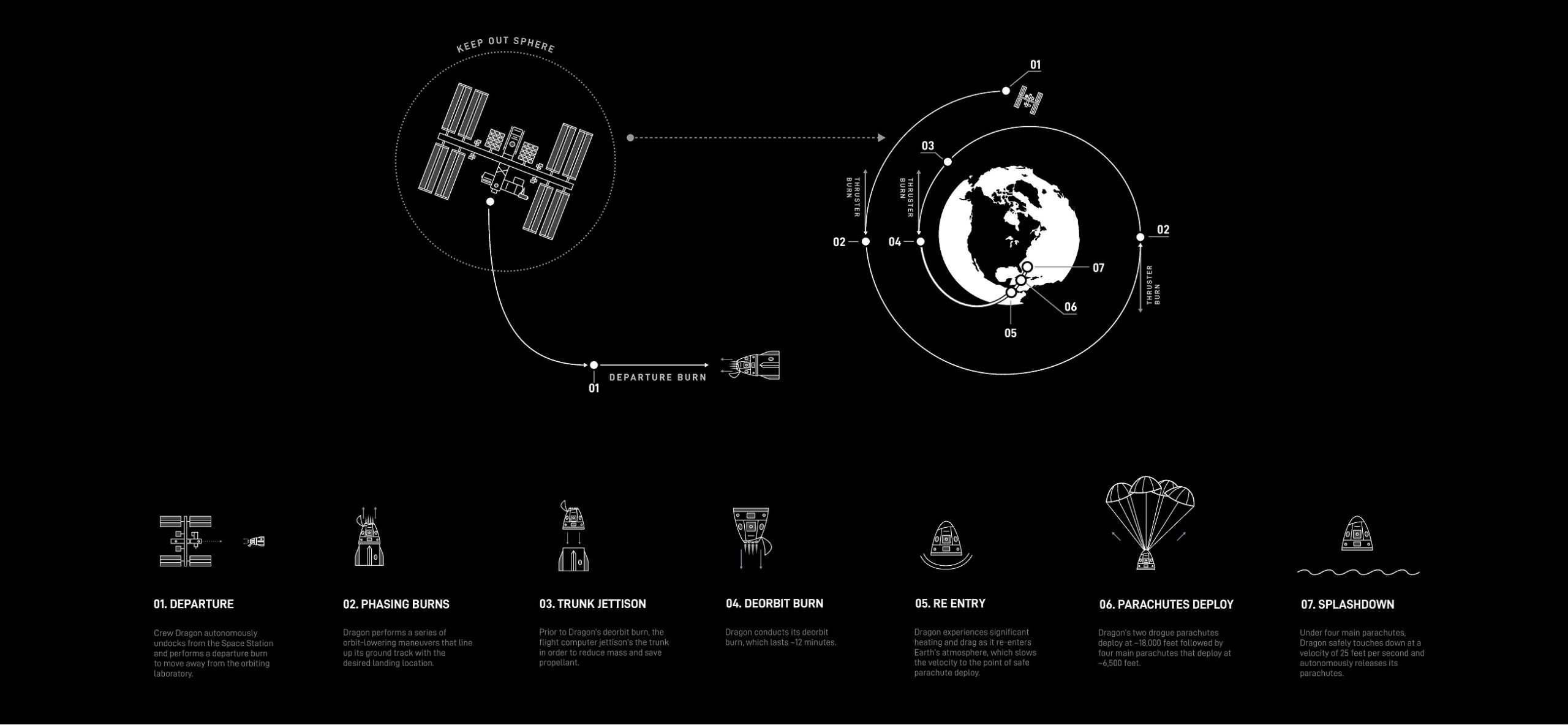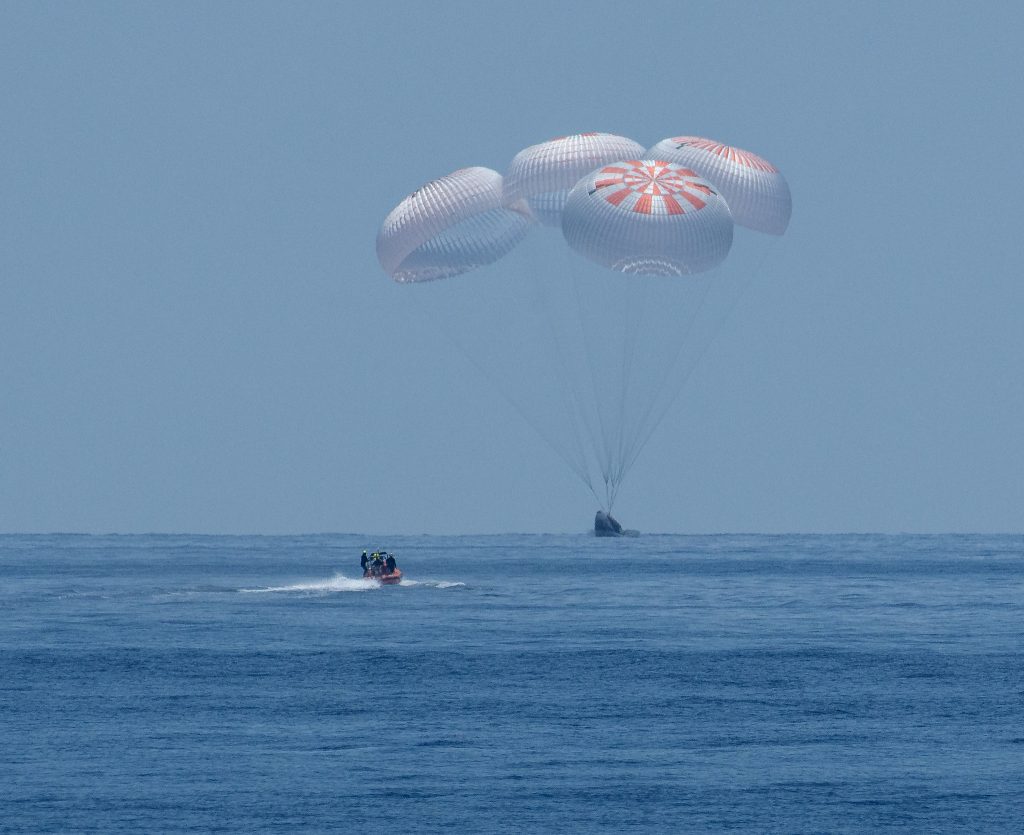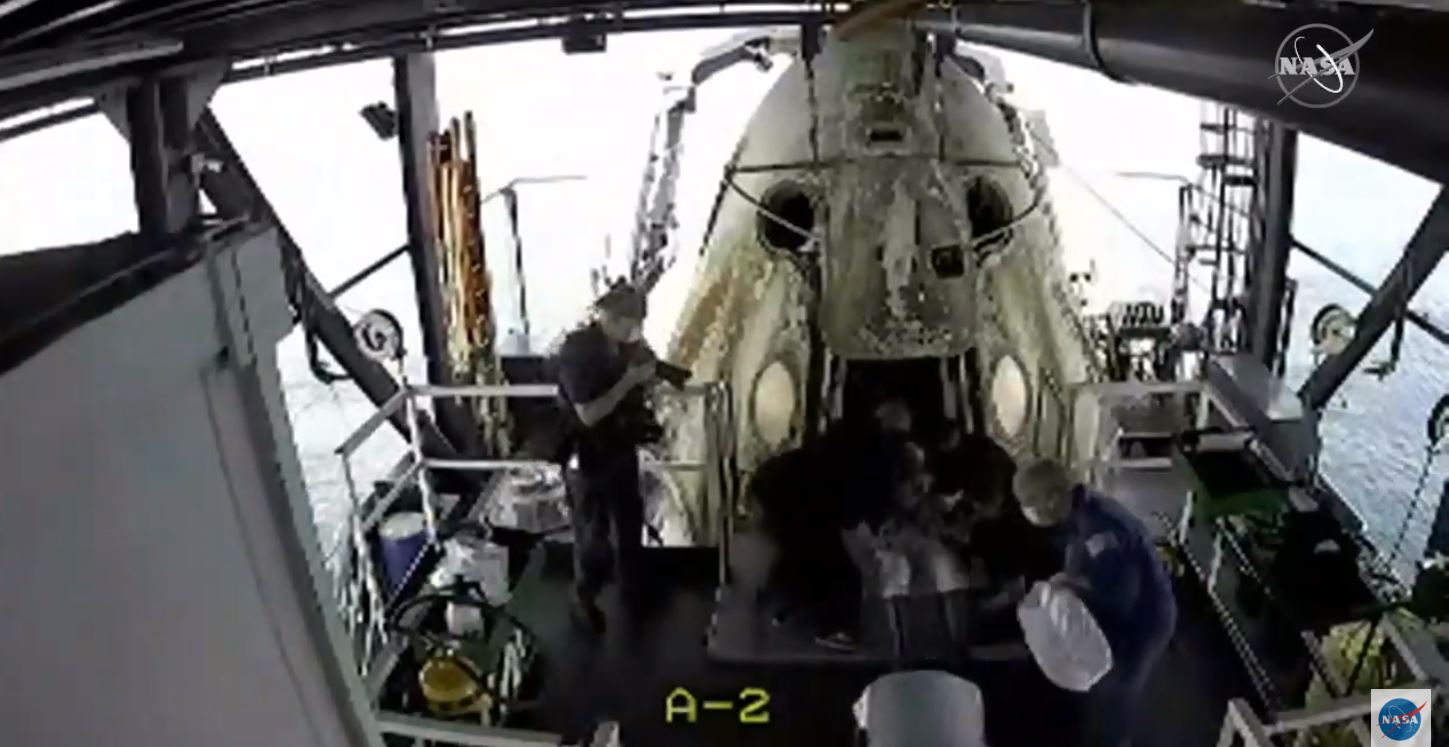Pensacola, Florida—Waves crash as the noise of reentry stopped. NASA astronauts Robert Behnken and Doug Hurley peered out from their capsule, eventually spotting their recovery boat amidst the curious private ships that flooded the scene after spotting the craft. “Thank you for flying SpaceX,” said the mission control from a 24-desk team in California.
I’ve always wanted to go to space. From waking my parents to Mars rover news to a recent camping trip where stargazing led to a conversation about visiting the constellations, I’ve dreamed about accessible space travel. SpaceX is making dreams come true with effortless missions like the Dragon Demo-2. The journey, lasting from May 31 to August 1, was leaps and bounds ahead of the Apollo missions I grew up reading about. A meeting of generations, coverage of the flight showed light management from the Johnson Space Center in Houston, and primary control from the SpaceX facility in Hawthorne, California. An efficient team of 20 people remotely directed the astronauts down to Earth, finalizing the first round trip mission to space from the United States since 2011.

1:51 p.m. EST- Separation from ISS
As Behnken and Hurley began decoupling from the International Space Station (ISS), there was an air of simplicity to their actions. These experienced pilots lovingly referred to as “Space Dads” by the public, come from traditional backgrounds of aerospace work. Behnken earned the rank of colonel in the U.S. Air Force and accumulated over 50 hours of spacewalk time prior to the mission. Hurley was a Marine Corps pilot and conducted NASA mission STS-135, more commonly known as the last launch from the space shuttle program. During their mission, they conducted more than 100 hours of scientific experiments, four spacewalks, and completed 1,024 orbits around the Earth. Pilots of this pedigree were an easy pick for this momentous journey. As they began the process of ‘deorbit burning’, where the rockets opposed Earth’s gravity to maintain a calculated descent speed, they showcased the innovative partnership between NASA and SpaceX.

2:08 p.m. EST-Deploying nosecone
With the ISS barely in sight, Behnken and Hurley’s craft fell back to Earth in a similar fashion to space flights of the past. The nosecone capsule separated from the trunk of the return rocket, making a course for the Gulf of Mexico where so many missions have splashed down before. However, the Demo-2 crew didn’t simply lob their propulsion system into the ocean. A mark of considerate engineering, the trunk of the return rocket had been saved from the body tube on the arrival flight and maneuvered itself into position for the return. This was eco-friendly and safer for the pilots. The mission peered into a futuristic fantasy, using sleek flight suits, an Apple-esque cockpit, and clean information displays. This partnership of government organization and private enterprise showed ambition for a safer, more stylish future of space travel.

2:45 p.m. EST- Parachutes deploy
The Demo-2 mission defined cruising speed as they reentered the atmosphere at a lilting 350mph. That doesn’t mean the reentry was without error; after finishing their journey with a 2:48 p.m. EST splashdown, traces of nitrogen tetroxide were found around the pod. This chemical composition was responsible for errors earlier in the lifecycle of the Dragon rocket, rendering the Demo-1 attempt in 2019 unsuccessful.

Regardless, the two pilots of this era of space travel arrived safely. Pulled in by a crane, Behnken and Hurley set foot onto the recovery platform about an hour after their departure from the Harmony module. A small, masked media team swarmed them, attempting to learn more about these heroes. The ‘Space Dads’ even got an opportunity to show off their humor, making tongue-in-cheek calls to family members and the flight director console. The astronauts were flown off to Houston for a press conference, shifting uneasily in their chairs as they readapted to Earth’s gravity. During a vacuum in American hope, the completion of this demo stands as an act of ambition in an otherwise tumultuous time. The successful return of the Demo-2 mission thus confirms the future partnership of NASA and SpaceX, exciting us about when they’ll see the stars next.

Austin Colwell is the writer of this article. He covers beats space, tech and music at Maheen The Globe, a Seattle–based, independent global media outlet.
